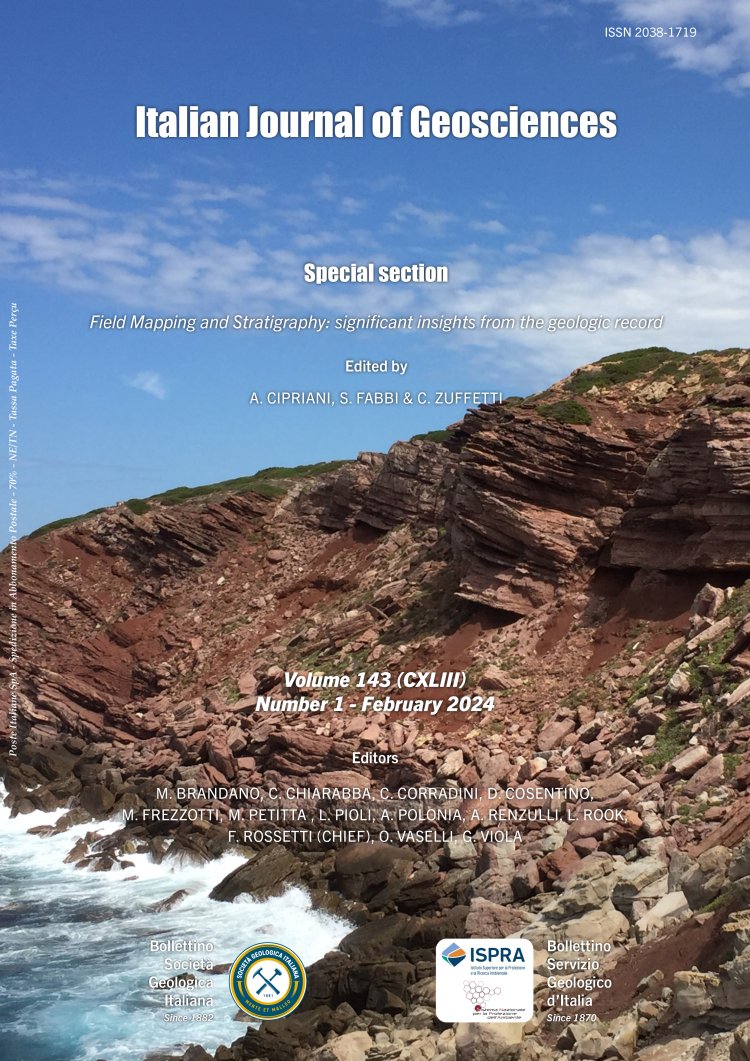

Geological maps: evolution and use of the precious knowledge hidden in a coloured landscape
Fabrizio Berra1, Chiara D’Ambrogi2 & Marcello Tropeano3
1Università degli Studi di Milano, Dipartimento di Scienze della Terra “A. Desio”.
2Dipartimento Servizio Geologico d’Italia – ISPRA.
3Dipartimento Di Scienze Della Terra e Geoambientali, Università degli Studi di Bari “A. Moro”.
Corresponding author e-mail: fabrizio.berra@unimi.it
Volume: 143 (2024) f.1
Pages: 5-24
Abstract
Since the first modern geological map published in 1815, geological maps represent the best way to store geological knowledge, available for different applications. As for all the other types of thematic maps, geological maps require a continuous update. For geological maps updating is critical, not because the geology of a territory is affected by significant, major changes at a human time scale (except for major catastrophic events, such as flooding, landslides, volcanic eruptions) but because the geological knowledge of a territory increases continuously. Actually, the increased understanding of geological processes and the development of new technological tools for analyses (both on rocks and minerals but also for geophysical investigations) greatly developed in the last century, continuously providing new data able to enhance the geological knowledge. Furthermore, the availability of digital tools able to store and process georeferenced data, improved the integration of geological elements with other types of geographic information (such as land use, urbanistic plans, infrastructure networks and so on), increasing the integration of different information for decision-makers. The classical process of geological mapping (starting from outdoor field work integrated with laboratory analyses) requires a major effort for the homogenization of the criteria when the systematic geological mapping of entire countries is planned to produce maps that represent with the same rules complex and wide areas. The need of the update of geological maps is documented by some examples of application of the Italian official geological map at 1:50,000 scale (CARG Project) as well as the innovations that this project represents with respect to previous maps at 1:100,000 scale in terms of definition of mappable units, criteria for representation of geological objects and presence of a digital database, promoting its use for different applications related to land management.
Keywords
Get Full Text